-
 Bitcoin
Bitcoin $86,250.6982
1.63% -
 Ethereum
Ethereum $1,890.1026
-0.98% -
 Tether USDt
Tether USDt $1.0000
0.01% -
 XRP
XRP $2.1367
0.29% -
 BNB
BNB $603.5934
-0.76% -
 Solana
Solana $129.4201
2.45% -
 USDC
USDC $1.0000
0.00% -
 Dogecoin
Dogecoin $0.1724
0.45% -
 Cardano
Cardano $0.6839
0.62% -
 TRON
TRON $0.2381
0.57% -
 Toncoin
Toncoin $3.9840
-0.47% -
 Chainlink
Chainlink $13.8431
-2.30% -
 UNUS SED LEO
UNUS SED LEO $9.3956
0.41% -
 Stellar
Stellar $0.2705
-1.46% -
 Avalanche
Avalanche $19.2650
-0.80% -
 Sui
Sui $2.4309
0.03% -
 Shiba Inu
Shiba Inu $0.0...01260
-0.64% -
 Hedera
Hedera $0.1716
0.58% -
 Polkadot
Polkadot $4.1457
-0.42% -
 Litecoin
Litecoin $85.5964
0.72% -
 Bitcoin Cash
Bitcoin Cash $308.6728
-0.07% -
 MANTRA
MANTRA $6.3356
0.99% -
 Bitget Token
Bitget Token $4.5842
-0.52% -
 Dai
Dai $0.9997
-0.04% -
 Ethena USDe
Ethena USDe $0.9999
0.01% -
 Hyperliquid
Hyperliquid $13.7596
4.34% -
 Pi
Pi $0.6794
-3.81% -
 Monero
Monero $219.4683
1.07% -
 Uniswap
Uniswap $6.1878
-0.70% -
 Aptos
Aptos $5.3777
0.02%
How to operate Bybit's leveraged trading?
Bybit's leveraged trading amplifies profits and risks; understand margin, liquidation, and use stop-losses to manage potential losses effectively.
Mar 31, 2025 at 03:28 am
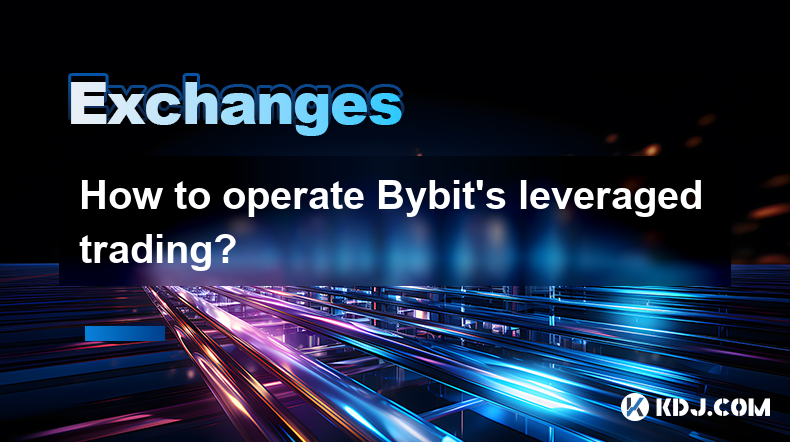
Understanding Bybit's Leveraged Trading
Bybit is a popular cryptocurrency exchange known for its leveraged trading offerings. Leveraged trading allows you to amplify your potential profits, but it also significantly increases your risk of losses. Before engaging in leveraged trading on Bybit, it's crucial to understand the mechanics and associated risks. This guide will walk you through the process, explaining the key steps and considerations.
Opening a Bybit Account and Funding
First, you need a Bybit account. Visit the Bybit website and follow the registration process. You'll need to provide some personal information and verify your email address and potentially your phone number. Once registered, you'll need to fund your account. Bybit supports various cryptocurrencies for deposits. Choose your preferred method and transfer the funds from your external wallet. Remember to always double-check the deposit address to avoid irreversible loss of funds.
Choosing Your Trading Pair and Leverage
Bybit offers a wide range of cryptocurrency trading pairs. Select the pair you want to trade based on your market analysis and risk tolerance. A crucial aspect of leveraged trading is selecting the leverage. Leverage magnifies both profits and losses. Higher leverage means higher potential returns but also higher risk of liquidation. Start with lower leverage until you gain experience and confidence. Bybit allows you to adjust your leverage for each trade individually.
Placing a Leveraged Order
After selecting your trading pair and leverage, it's time to place your order. Bybit offers various order types, including market orders (executed immediately at the current market price) and limit orders (executed only when the price reaches your specified level). Understand the difference between long (buy) and short (sell) positions. A long position anticipates price increases, while a short position anticipates price decreases. Clearly define your entry and exit strategies before placing any order.
Understanding Margin and Liquidation
Leveraged trading uses margin, which is the amount of your own funds you put up as collateral. Your margin requirement will depend on your chosen leverage and the price movement of the asset. If the market moves against your position and your margin falls below the maintenance margin, your position is at risk of liquidation. Liquidation means Bybit automatically closes your position to prevent further losses. This can result in significant losses, exceeding your initial investment.
Managing Risk and Protecting Your Capital
Risk management is paramount in leveraged trading. Never invest more than you can afford to lose. Utilize stop-loss orders to automatically close your position if the price moves against you by a certain amount. This helps limit potential losses. Furthermore, diversify your portfolio and avoid over-leveraging. Regularly review your trading performance and adjust your strategy as needed.
Understanding Fees and Charges
Bybit charges trading fees on both opening and closing positions. These fees vary depending on the trading pair and your trading volume. Understanding the fee structure is essential for accurate profit calculation. Check Bybit's fee schedule to understand the cost implications of your trades. These fees can eat into your profits, especially with frequent trading.
Using Bybit's Trading Interface
Bybit provides a user-friendly trading interface, but it’s crucial to familiarize yourself with its features. Understand how to place orders, manage your positions, and monitor your account balance. Bybit offers tutorials and demo accounts to practice leveraged trading without risking real funds. Take advantage of these resources before using real money. Practice until you feel comfortable navigating the platform and placing trades confidently.
Advanced Leveraged Trading Strategies
More advanced strategies involve techniques like hedging and arbitrage. Hedging involves taking offsetting positions to reduce risk. Arbitrage involves exploiting price differences between different exchanges. These strategies are more complex and require a deeper understanding of market dynamics. Only attempt these strategies after gaining significant experience in basic leveraged trading. Thorough research and risk management are crucial.
Step-by-Step Guide to Placing a Long Position
- Choose your trading pair (e.g., BTC/USDT).
- Select your desired leverage (e.g., 10x).
- Specify the amount of cryptocurrency you want to buy.
- Choose a market or limit order type.
- Click the "Buy/Long" button to execute the order.
- Monitor your position and adjust your stop-loss if needed.
Step-by-Step Guide to Placing a Short Position
- Choose your trading pair (e.g., BTC/USDT).
- Select your desired leverage (e.g., 10x).
- Specify the amount of cryptocurrency you want to sell.
- Choose a market or limit order type.
- Click the "Sell/Short" button to execute the order.
- Monitor your position and adjust your stop-loss if needed.
Frequently Asked Questions
Q: What is liquidation in leveraged trading?
A: Liquidation is when Bybit automatically closes your position because your margin falls below the maintenance margin. This happens when the market moves against your position, resulting in potential significant losses.
Q: How can I minimize the risk of liquidation?
A: Use stop-loss orders to automatically close your position if the price moves against you by a certain amount. Avoid over-leveraging and diversify your portfolio. Thoroughly understand the risks involved before engaging in leveraged trading.
Q: What are the fees associated with leveraged trading on Bybit?
A: Bybit charges trading fees on both opening and closing positions. The specific fees depend on the trading pair and your trading volume. Check Bybit's fee schedule for details.
Q: What is the difference between a long and short position?
A: A long position anticipates price increases, while a short position anticipates price decreases. A long position involves buying, while a short position involves selling borrowed assets.
Q: Can I practice leveraged trading without risking real money?
A: Yes, Bybit offers demo accounts that allow you to practice leveraged trading with virtual funds before using real money. This is highly recommended for beginners.
Q: What is the maximum leverage offered by Bybit?
A: The maximum leverage offered by Bybit varies depending on the trading pair and other factors. It is advisable to check the platform for the most up-to-date information on leverage limits. However, it's important to remember that higher leverage significantly increases risk.
Disclaimer:info@kdj.com
The information provided is not trading advice. kdj.com does not assume any responsibility for any investments made based on the information provided in this article. Cryptocurrencies are highly volatile and it is highly recommended that you invest with caution after thorough research!
If you believe that the content used on this website infringes your copyright, please contact us immediately (info@kdj.com) and we will delete it promptly.
- Grayscale Launches Two New Bitcoin ETFs: BTCC and BPI
- 2025-04-03 02:05:12
- Bitcoin (BTCUSD) Has Been on an Upward Trajectory Despite Volatility in Crypto and Traditional Markets
- 2025-04-03 02:05:12
- Ripple Integrates Its USD-Backed Stablecoin to Cross-Border Payments System
- 2025-04-03 02:00:12
- Dogecoin (DOGE) Forms Inverse H&S Pattern, Presenting Immediate Breakout Targets
- 2025-04-03 02:00:12
- Retesting the 61.8% Fibonacci Retracement Level Could Be a Defining Moment for the SOL/USD Pair
- 2025-04-03 01:55:13
- Ozak AI (OZ) Could Be the Next 1000x Gainer, Not Gold
- 2025-04-03 01:55:13
Related knowledge
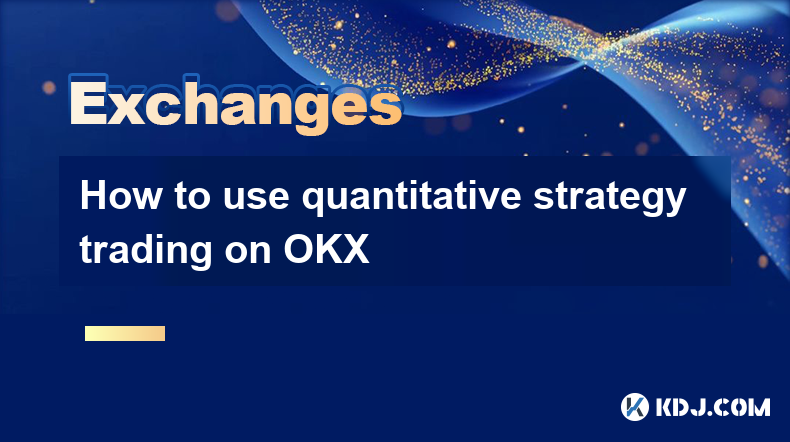
How to use quantitative strategy trading on OKX
Apr 03,2025 at 12:21am
Quantitative strategy trading, often referred to as algo trading or automated trading, leverages mathematical models and algorithms to make trading decisions. OKX, a leading cryptocurrency exchange, offers robust tools and APIs that can be utilized to implement such strategies. This article will guide you through the process of setting up and executing ...

How to trade leveraged tokens on MEXC
Apr 03,2025 at 12:15am
Trading leveraged tokens on MEXC can be an exciting yet complex endeavor for cryptocurrency enthusiasts. Leveraged tokens are financial instruments that allow traders to gain exposure to the price movements of an underlying asset with added leverage, without the need for managing margin or worrying about liquidation. MEXC, a popular cryptocurrency excha...
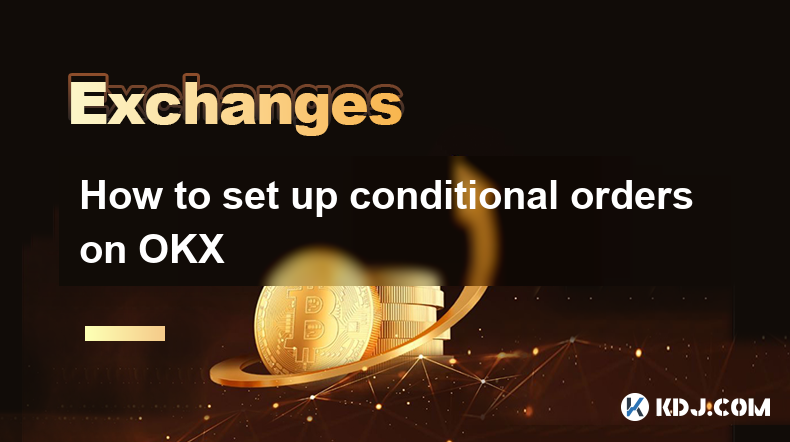
How to set up conditional orders on OKX
Apr 02,2025 at 11:56pm
Setting up conditional orders on OKX can be a powerful tool for traders looking to automate their trading strategies. Conditional orders, also known as trigger orders, allow you to set specific conditions under which your order will be executed. This can help you manage risk and capitalize on market movements without needing to constantly monitor the ma...
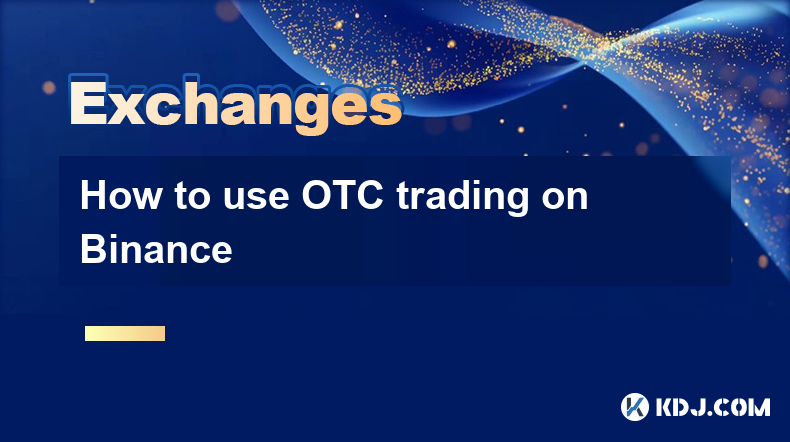
How to use OTC trading on Binance
Apr 02,2025 at 11:28pm
OTC trading, or over-the-counter trading, on Binance offers a way to trade cryptocurrencies directly with other users without impacting the open market. This method is particularly useful for large volume trades, as it allows for more privacy and can often result in better pricing. To start using OTC trading on Binance, you first need to have a verified...

How to check spot trading pairs on Bybit
Apr 03,2025 at 02:42am
Bybit is a popular cryptocurrency exchange that offers a wide range of trading pairs for spot trading. Spot trading involves buying and selling cryptocurrencies at the current market price. To effectively navigate and utilize Bybit's spot trading platform, it's essential to know how to check and understand the available trading pairs. This article will ...
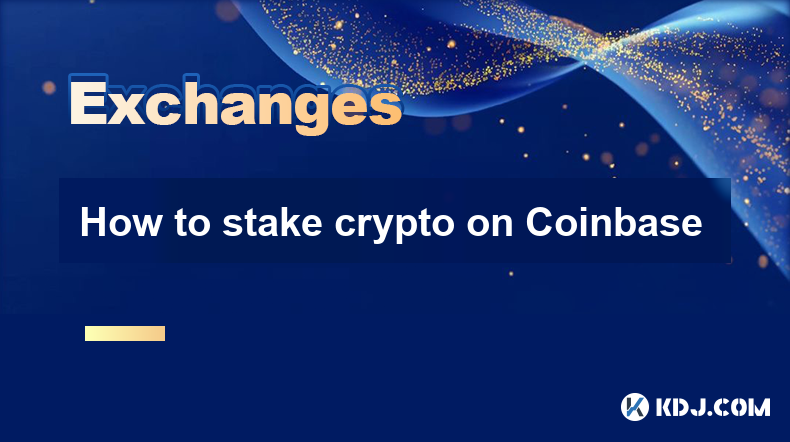
How to stake crypto on Coinbase
Apr 02,2025 at 07:28pm
Staking crypto on Coinbase is a straightforward process that allows you to earn rewards on your cryptocurrency holdings. By participating in staking, you help secure the network of the cryptocurrency you're holding, and in return, you receive additional tokens as a reward. Coinbase supports staking for several cryptocurrencies, including Ethereum, Carda...

How to use quantitative strategy trading on OKX
Apr 03,2025 at 12:21am
Quantitative strategy trading, often referred to as algo trading or automated trading, leverages mathematical models and algorithms to make trading decisions. OKX, a leading cryptocurrency exchange, offers robust tools and APIs that can be utilized to implement such strategies. This article will guide you through the process of setting up and executing ...

How to trade leveraged tokens on MEXC
Apr 03,2025 at 12:15am
Trading leveraged tokens on MEXC can be an exciting yet complex endeavor for cryptocurrency enthusiasts. Leveraged tokens are financial instruments that allow traders to gain exposure to the price movements of an underlying asset with added leverage, without the need for managing margin or worrying about liquidation. MEXC, a popular cryptocurrency excha...

How to set up conditional orders on OKX
Apr 02,2025 at 11:56pm
Setting up conditional orders on OKX can be a powerful tool for traders looking to automate their trading strategies. Conditional orders, also known as trigger orders, allow you to set specific conditions under which your order will be executed. This can help you manage risk and capitalize on market movements without needing to constantly monitor the ma...

How to use OTC trading on Binance
Apr 02,2025 at 11:28pm
OTC trading, or over-the-counter trading, on Binance offers a way to trade cryptocurrencies directly with other users without impacting the open market. This method is particularly useful for large volume trades, as it allows for more privacy and can often result in better pricing. To start using OTC trading on Binance, you first need to have a verified...

How to check spot trading pairs on Bybit
Apr 03,2025 at 02:42am
Bybit is a popular cryptocurrency exchange that offers a wide range of trading pairs for spot trading. Spot trading involves buying and selling cryptocurrencies at the current market price. To effectively navigate and utilize Bybit's spot trading platform, it's essential to know how to check and understand the available trading pairs. This article will ...

How to stake crypto on Coinbase
Apr 02,2025 at 07:28pm
Staking crypto on Coinbase is a straightforward process that allows you to earn rewards on your cryptocurrency holdings. By participating in staking, you help secure the network of the cryptocurrency you're holding, and in return, you receive additional tokens as a reward. Coinbase supports staking for several cryptocurrencies, including Ethereum, Carda...
See all articles
























































































